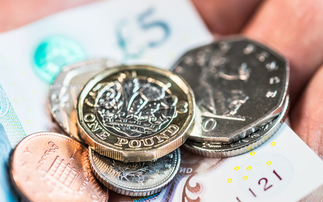The latest GDP announcement showed a 0.4% slowdown in growth in the first three months of the year, compared with the 0.6% recorded between October and December 2015, writes Michelle McGrade, CIO at TD Direct Investing.
However, it is best investors do not read into this, or Brexit fears, too much and continue to invest for the longer term.
Investing regularly is the best step forward in order to beat the current market volatility, rather than fearing it. Timing the the market is difficult and is less of a concern with regular investing.
Despite fears that the UK could vote to leave the EU in June, attitudes to the current market volatility vary from a 'wait and see' approach, to reasonably steady.
Which stocks will be the biggest Brexit losers?
The recent GDP slowdown shows the ‘wait and see' attitude coming into effect, as investors are standing by to see where the UK will remain after June.
Markets have been lacklustre, and despite feeling bullish, people are sitting on the side lines.
The service sector has been the sole performer in the last quarter, while construction, production and agriculture contracted. This kind of uncertainty does not bode well with markets, yet confidence is boosting as our labour market is strong with record employment.
The market is reasonably steady at the moment despite slowing growth and Brexit fears.
If you exclude the oil and commodity sectors, company earnings have held up well, with many companies giving positive outlooks, and their share prices are relatively cheap offering attractive yields.
How do wealth segments compare when analysing 'Brexit effect' on investments?
Whether one is talking about Brexit, or more generally about other geopolitical general risks, investors should not try and be too clever by trying to second guess how things are going to play out.
Investors should therefore stay invested and continue to find opportunities to do this, such as setting up monthly investment plans. This can be an ideal way to stay in the markets and make the most of contrarian opportunities during challenging conditions.
How regular investing can work in practice and the benefits of doing so
ISAs
ISAs could help give you a way of making full use of your annual allowance, or allow you to use as much of your allowance as you can reasonably afford as early as possible, so you can benefit from compounding.
Pensions
It is important to remember that medium-term investment goals should be managed alongside your pension pot. Every contribution made by an individual into a workplace pension scheme is matched by their employer and topped up with tax relief by HMRC.
Drip-feed savings
Drip-feed savings is the ongoing process of investing over a period of time in small contributions. An option for all investors, irrespective of whether you're a higher-rate taxpayer, is to use regular investing as a way of drip feeding money into your ISA or SIPP over time. Instead of a one-off investment prior to the new tax year, a regular monthly contribution is an excellent way of both managing your savings and benefiting from being invested in markets as early as possible.
Overall, we expect share prices to remain subdued until after the referendum vote and for general growth to be paused.
My advice to investors is not to read too much into what you hear between now and 23 June, as most of it is based on emotion as opposed to facts. Instead, people should not fear the unknown and invest regularly.














